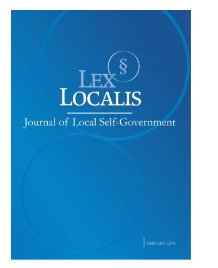"STRATEGIC INTENT AND BANK PERFORMANCE: DOES INNOVATION MATTER IN THE CONTEXT OF RURAL BANKS?"
DOI:
https://doi.org/10.52152/801654Keywords:
Strategic Intent; Strategic Innovation, Banking Performance; BPR; Strategic ManagementAbstract
This study examines the effect of strategic intent on bank performance, with strategic innovation positioned as a mediating variable, in the context of Indonesia’s rural banking sector (Bank Perekonomian Rakyat, BPR). The research is theoretically grounded in Strategic Intent Theory (Hamel & Prahalad, 1989), which posits that a clear and compelling long-term vision drives organizational focus and competitiveness, and Innovation Diffusion Theory (Rogers, 2003), which explains how innovations are adopted and spread within organizational systems. Together, these frameworks provide a comprehensive lens to understand how vision-driven strategies are translated into performance outcomes through innovation.Data were collected through a cross-sectional survey of BPRs and analyzed using Structural Equation Modeling (SEM).
The findings reveal that strategic intent has a significant and positive direct effect on bank performance, reaffirming the importance of long-term strategic direction in achieving organizational success. However, strategic innovation was not found to be a statistically significant mediator of this relationship. This result suggests a disconnect between strategic direction and innovation execution, supporting the notion of innovation performance misalignment (Tidd & Bessant, 2013). Many BPRs implement innovation strategies such as digital service development and core banking upgrade without adequate alignment to their conservative, relationship-based customer segments, or without the dynamic capabilities necessary for effective innovation diffusion.
This misalignment is further compounded by limited digital infrastructure, constrained human capital, and regulatory rigidity from the Financial Services Authority (OJK), which delays innovation deployment. The study proposes a Strategic Intent–Contextual Innovation Fit Model, arguing that innovation only enhances performance when it is aligned with internal capabilities and market realities, as emphasized in both Strategic Intent Theory and Innovation Diffusion Theory.
Managerial implications call for a capability-first approach to innovation, ensuring foundational readiness before pursuing transformation. Regulatory implications suggest the need for more adaptive frameworks that enable experimentation while maintaining oversight. These findings align with the OJK Roadmap 2024–2027, particularly its emphasis on human capital development and institutional strengthening within the BPR sector.
Downloads
Published
Issue
Section
License
Copyright (c) 2025 Lex localis - Journal of Local Self-Government

This work is licensed under a Creative Commons Attribution-NonCommercial-NoDerivatives 4.0 International License.








